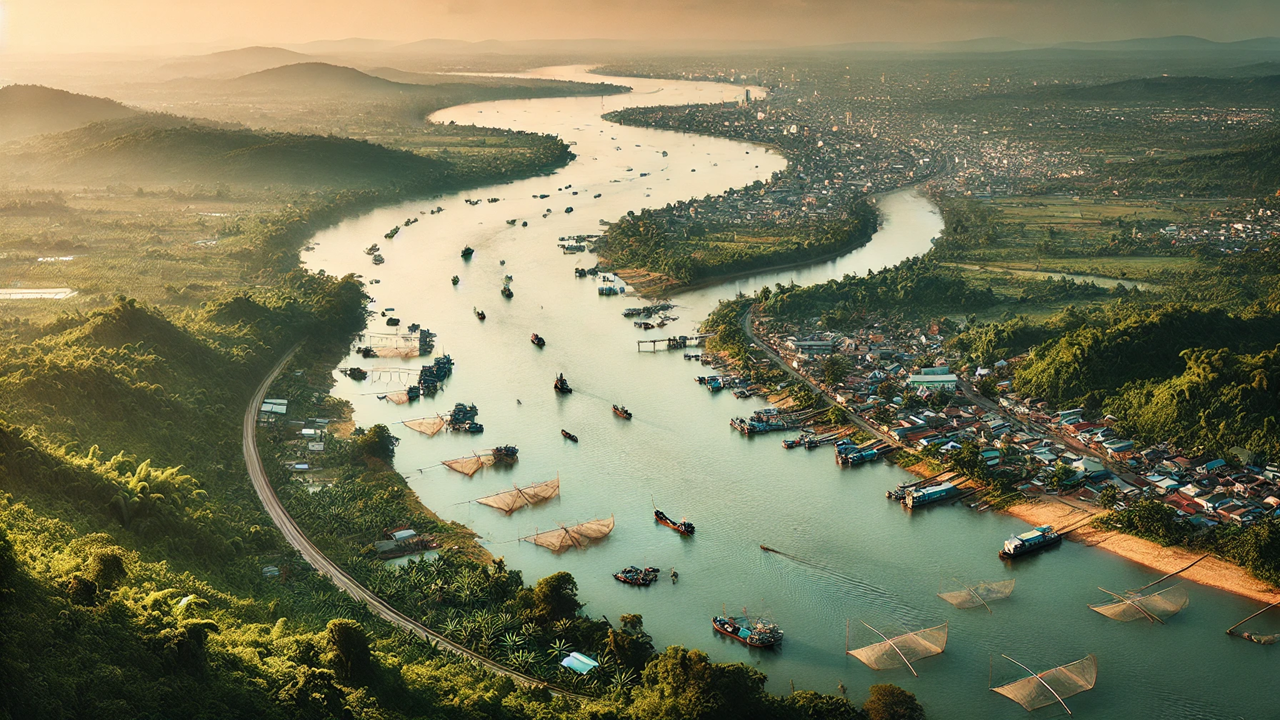Clean Waters, Bright Futures: Innovative Finance Solutions to Save Southeast Asia's Rivers
The Asian Development Bank's report, "Innovative Finance Approaches for Addressing River Basin Pollution: Combating Aquatic Biodiversity Loss in Southeast Asia," highlights the severe water crisis in Southeast Asia caused by river pollution. It outlines innovative financial solutions and integrated approaches to restore river health and support sustainable development in the region.

Southeast Asia, a region renowned for its rich biodiversity and vital river systems, is grappling with a severe water crisis. Major rivers such as the Mekong, Hong (Red), Chao Phraya, and Citarum are increasingly threatened by pollution, endangering ecosystems and impacting millions of lives. The Asian Development Bank's recent report, "Innovative Finance Approaches for Addressing River Basin Pollution: Combating Aquatic Biodiversity Loss in Southeast Asia," sheds light on this pressing issue and proposes innovative solutions to restore river health.
The Pollution Plague
The Mekong River, one of the longest and most significant rivers in Southeast Asia, faces substantial pollution from agricultural activities, urban settlements, and industrial discharge. The Hong (Red) River, crucial to northern Vietnam, suffers from degradation due to rapid economic growth and dense populations. Similarly, the Chao Phraya River in Thailand, essential for agriculture and supporting Bangkok, has become a pollution hotspot. The Citarum River in Indonesia, often dubbed the world's most polluted river, is choked with industrial waste and insufficient waste management.
The primary culprits behind this pollution crisis are municipal waste, industrial effluents, agricultural runoff, and plastic waste. Rapid urbanization and economic growth have outpaced waste management infrastructure, leading to severe pollution. Industrial activities discharge toxic chemicals into water bodies, while agricultural practices introduce harmful agrochemicals and organic matter. Southeast Asia has also become a significant source of plastic pollution, with rivers in the region contributing heavily to marine debris.
Consequences on Health and Ecosystems
The impact of river pollution in Southeast Asia is far-reaching. Biodiversity loss is a critical concern as pollution disrupts ecosystems and endangers numerous species. The decline in aquatic life affects food security and the livelihoods of communities relying on these rivers. Additionally, polluted rivers contribute to climate change by releasing greenhouse gases and undermining carbon sequestration. Human health is also at risk, with contaminated water sources causing waterborne illnesses and reducing agricultural productivity.
Innovative Solutions for a Sustainable Future
Addressing river pollution requires a multifaceted approach that integrates nature-based solutions (NBS), policy measures, institutional arrangements, and innovative financing mechanisms.
Nature-Based Solutions (NBS): Utilizing and protecting natural ecosystems, restoring damaged ones, and creating new ecosystems are vital strategies. NBS can mitigate water-related hazards and adapt to climate change, making them a cornerstone of sustainable river management.
Policy Measures: Effective policies, including command and control regulations and economic incentives, are essential. These measures encourage stakeholders to adopt sustainable practices, reduce pollution, and protect river ecosystems.
Institutional Arrangements: Strong institutional frameworks are crucial for implementing policies and NBS effectively. Coordinated efforts among government agencies, community engagement, and public awareness are vital components of successful river management.
Innovative Financing Mechanisms: Innovative financial tools, such as blue bonds, public-private partnerships, and blended finance, are necessary to bridge the infrastructure financing gap. These mechanisms leverage public and private sector resources to fund sustainable development projects.
Call to Action
The report concludes with a call to action for stakeholders in the Greater Mekong Subregion to implement projects that address river pollution. It emphasizes the need for a holistic approach that combines NBS, policy measures, institutional arrangements, and innovative financing to restore river health and support sustainable development.
By adopting these integrated strategies, Southeast Asia can turn the tide on river pollution, protecting its vital water resources and ensuring a sustainable future for its people and ecosystems.
- FIRST PUBLISHED IN:
- Devdiscourse
ALSO READ
WHO Urges Southeast Asia to Tackle Illicit Tobacco and Alcohol Trade
Saving Biodiversity: The $263 Billion Plan to Protect 1.6 Million Square Km
Current Science News Highlights: From Space Challenges to Biodiversity Solutions
Investors Unite for Biodiversity: Global Talks to Preserve Nature
HSG Laser Launches New Production Base in Bangkok to Expand Southeast Asian Presence










